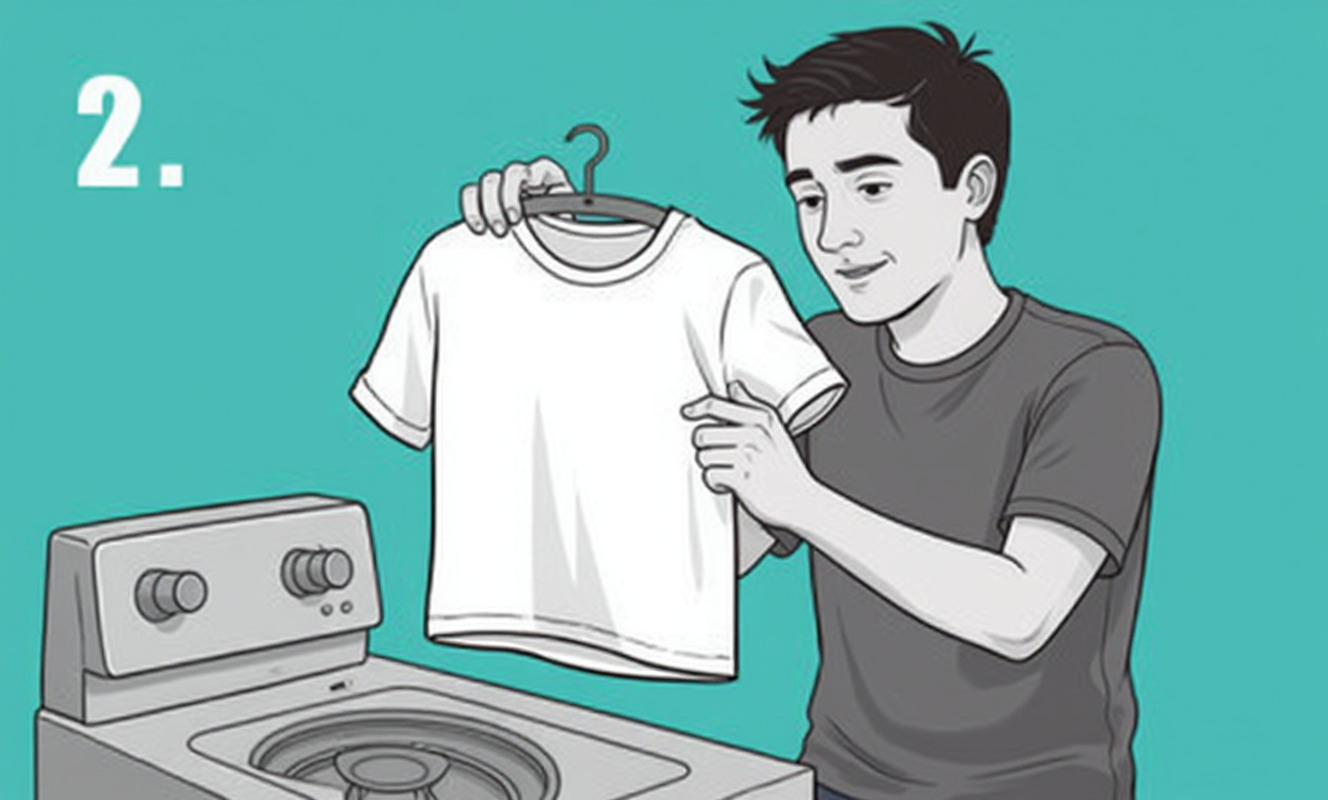Introduction
There's a unique joy that comes with a new piece of printed apparel—be it a band tee, a custom design, or a vibrant graphic shirt. The crisp colors, the sharp lines, the way it expresses your personality. But that joy can quickly turn to dread when, after just a few washes, the print starts to fade, crack, or peel. It's a common frustration, and one that often leads to beloved garments being relegated to the back of the closet or, worse, the trash bin.
The good news is that extending the life and vibrancy of your printed garments is entirely within your control. With a few simple, yet crucial, care practices, you can keep your favorite tees, hoodies, and other printed items looking fresh and new for much longer than you might think. This blog post will serve as your comprehensive guide, offering practical tips, expert advice, and actionable guidance on how to wash, dry, and store your printed apparel to ensure its longevity and maintain its original appeal.
Understanding Printed Apparel
Before diving into care instructions, it's helpful to understand what makes printed apparel unique and why it requires special attention. Unlike dyed fabrics where the color is integrated into the fibers, printed apparel features designs applied to the surface of the fabric. The most common methods include screen printing, heat transfer vinyl (HTV), and direct-to-garment (DTG) printing.
- Screen Printing: This traditional method involves pushing ink through a woven mesh stencil onto the fabric. It's known for its durability and vibrant colors, but the ink sits on top of the fabric, making it susceptible to cracking or fading if not cared for properly.
- Heat Transfer Vinyl (HTV): HTV designs are cut from vinyl sheets and then applied to the fabric using heat and pressure. While HTV offers excellent detail and versatility, the vinyl can peel or crack over time, especially with improper washing or drying.
- Direct-to-Garment (DTG): DTG printing is similar to inkjet printing on paper, where specialized inks are sprayed directly onto the garment and then cured with heat. DTG prints can be very soft and breathable, but they can be more prone to fading if exposed to harsh detergents or high heat.
Regardless of the printing method, the common enemies of printed apparel are heat, harsh chemicals, and excessive friction. These elements can cause the print to degrade, crack, fade, or even peel away from the fabric. Understanding these vulnerabilities is the first step towards preserving your cherished printed garments.
Washing Wisdom: Gentle Care for Lasting Prints
The washing machine can be a battlefield for printed apparel if not approached with caution. The key to preserving your prints lies in gentle handling and mindful choices. Here’s how to navigate laundry day like a pro:
Turn Inside Out

This is perhaps the simplest yet most effective tip for protecting your printed garments. By turning your apparel inside out before washing, you create a barrier between the print and the harsh friction of other clothes, zippers, and the washing machine drum. This significantly reduces abrasion, which is a major cause of print cracking and fading.
Cold Water is Your Friend
When it comes to printed apparel, cold water is non-negotiable. Hot water can cause the ink to break down, leading to fading, cracking, and even shrinking of the garment itself, which further stresses the print. Aim for water temperatures around 30°C (86°F) or lower. Cold water helps to preserve the integrity of the print and the fabric fibers, ensuring your design stays vibrant and intact.
Gentle Cycle & Mild Detergent
Just as important as water temperature is the washing cycle. Always opt for the 'gentle' or 'delicate' cycle on your washing machine. These cycles use less agitation, reducing the stress on the print. Pair this with a mild detergent. Harsh detergents often contain strong chemicals and enzymes that can attack the dyes and adhesives in your prints, accelerating their degradation. Look for detergents labeled 'gentle,' 'mild,' or 'for delicates.'
Avoid Bleach and Fabric Softeners
Bleach is a powerful oxidizing agent designed to remove colors, making it an absolute enemy of printed apparel. Even non-chlorine bleach can be too harsh for delicate prints. Fabric softeners, while making clothes feel softer, can leave a residue that clogs the fibers and can sometimes react negatively with the print, leading to stickiness or damage over time. It's best to avoid both when washing printed garments.
Hand Washing (Optional but Recommended)
For truly cherished or delicate printed items, hand washing is the gentlest method. Fill a basin with cold water and a small amount of mild detergent. Turn the garment inside out, submerge it, and gently agitate the water. Allow it to soak for 10-15 minutes, then rinse thoroughly with cold water until all soap is gone. Hand washing minimizes friction and gives you complete control over the process, ensuring the print remains pristine.
Drying Do's and Don'ts: Preserve the Print
After a gentle wash, the drying process is equally critical for the longevity of your printed apparel. High heat is the arch-nemesis of most prints, causing them to crack, peel, or fade prematurely. ### Air Drying is Best.
Without a doubt, air drying is the gold standard for printed garments. The absence of heat protects the integrity of the print and prevents shrinkage of the fabric. You have a couple of options for air drying:
- Hang Drying: Hang your garment on a plastic hanger (wooden or metal hangers can sometimes leave marks or stretch the fabric). Ensure it's still inside out to protect the print from direct sunlight.
- Laying Flat: For heavier items or those prone to stretching, laying the garment flat on a clean, dry surface (like a drying rack or a clean towel) is ideal. This helps maintain the garment's shape and prevents distortion of the print.
Low Heat or No Heat Tumble Dry (If Necessary)
We understand that air drying isn't always feasible due to time constraints or living situations. If you must use a tumble dryer, follow these guidelines:
- Use the Lowest Heat Setting: Opt for the 'air fluff' or 'no heat' setting. If your dryer doesn't have this, choose the lowest possible heat setting. The goal is to minimize heat exposure as much as possible.
- Remove Promptly: As soon as the cycle is complete, remove the garment from the dryer. Over-drying, even on low heat, can be detrimental to the print.
- Consider Dryer Balls: Wool dryer balls can help reduce drying time and soften clothes naturally, without the need for fabric softeners.
Avoid Direct Sunlight
While air drying is recommended, avoid hanging printed apparel in direct sunlight. Prolonged exposure to UV rays can cause the colors in your print to fade over time, just as it can fade other colored fabrics.
Ironing and Storage: Final Touches for Longevity
Even after proper washing and drying, how you iron and store your printed apparel can significantly impact its lifespan and appearance.
Iron Inside Out (or Avoid Ironing the Print)
Direct heat from an iron can melt, distort, or permanently damage your printed design. If ironing is absolutely necessary, always turn the garment inside out. If the print is still visible through the fabric, place a thin cloth (like a pillowcase or parchment paper) over the print before ironing. Use a low heat setting and avoid steam, as moisture can also affect some prints. Ideally, avoid ironing directly over the print altogether.
Proper Storage
How you store your printed apparel can prevent unnecessary wear and tear.
- Folding vs. Hanging: For most printed t-shirts and hoodies, folding them neatly is often preferable to hanging. Hanging can sometimes stretch the fabric, especially around the shoulders, and distort the print over time. If you do hang them, use wide, padded hangers.
- Avoid Overcrowding: Don't cram your printed garments into a tightly packed closet or drawer. This can cause friction, creasing, and pressure on the prints, leading to cracking or damage. Allow your clothes some breathing room.
- Cool, Dry Place: Store your apparel in a cool, dry environment away from direct sunlight or excessive humidity. Extreme temperatures and moisture can degrade both the fabric and the print.
Quick Tips Summary
To recap, here's a quick checklist to ensure your printed apparel stays looking its best:
- Wash Inside Out: Always turn garments inside out before washing.
- Cold Water Only: Use cold water for all washes.
- Gentle Cycle: Select the delicate or gentle cycle on your washing machine.
- Mild Detergent: Opt for a gentle, mild detergent.
- No Bleach or Fabric Softener: Avoid these harsh chemicals.
- Air Dry is Best: Hang dry or lay flat to dry whenever possible.
- Low Heat Tumble Dry (If Necessary): Use the lowest heat setting and remove promptly.
- Avoid Direct Sunlight: When air drying, keep garments out of direct sun.
- Iron Inside Out: If ironing, turn the garment inside out and use low heat, or avoid ironing the print entirely.
- Store Properly: Fold neatly and store in a cool, dry place, avoiding overcrowding.
When to Seek Professional Help
While the tips above cover the vast majority of printed apparel care, there might be instances where professional intervention is warranted. For highly delicate items, vintage pieces, or garments with intricate or unusual prints, a professional cleaner specializing in garment care might be able to offer specialized cleaning methods that are safer than home laundering. Additionally, if you encounter stubborn stains that you're hesitant to treat yourself, a professional can often address them without damaging the print.
Conclusion
Your printed apparel is more than just clothing; it's a statement, a memory, or a piece of art. By investing a little extra care and attention, you can significantly extend its life, keeping the colors vibrant and the prints intact for years to come. These simple practices—from turning garments inside out before washing to opting for air drying—are small efforts that yield big rewards in terms of longevity and appearance.
We encourage you to implement these tips into your laundry routine. You'll be amazed at how much longer your favorite printed pieces will last. Do you have any other tried-and-true tips for caring for printed apparel? Share them in the comments below!
Enjoy your vibrant, long-lasting printed apparel!
